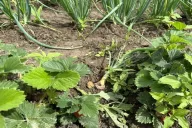Never do this again when planting tomatoes: fatal mistakes of many gardeners that many do not know about
Every experienced gardener knows that one crop cannot be planted in one place more than once. This rule also applies to tomatoes.
But it happens that owners of small plots have no choice.
As a result, you have to plant the plants again in the old beds. In such a situation, it is important to carry out a number of preparatory measures to reduce the risk of diseases and pests in the new season. If you forget about this, you can easily lose the harvest.
First, you need to remove all the remains from previous plantings, as they can infect the soil with fungus. You should not add the remains to the compost if they have not been pre-treated.
Afterwards, you can start working with the soil. The procedure should be performed in the fall and spring.

It is necessary to introduce preparations based on Trichoderma to reduce the risk of developing pathogenic fungi and bacteria.
In addition, in the fall, the soil should be fertilized with mineral fertilizers. In the spring, you can use compost or rotted manure.
One bucket of fertilizer should be used per square meter.
In early spring, dolomite flour or chalk should be added, but any calcium-based fertilizer will do. It should be taken into account that tomatoes are a fragile crop that will be affected by top rot if there is a calcium deficiency.
If you carry out these measures, you will ultimately get an excellent harvest of large and tasty tomatoes.
